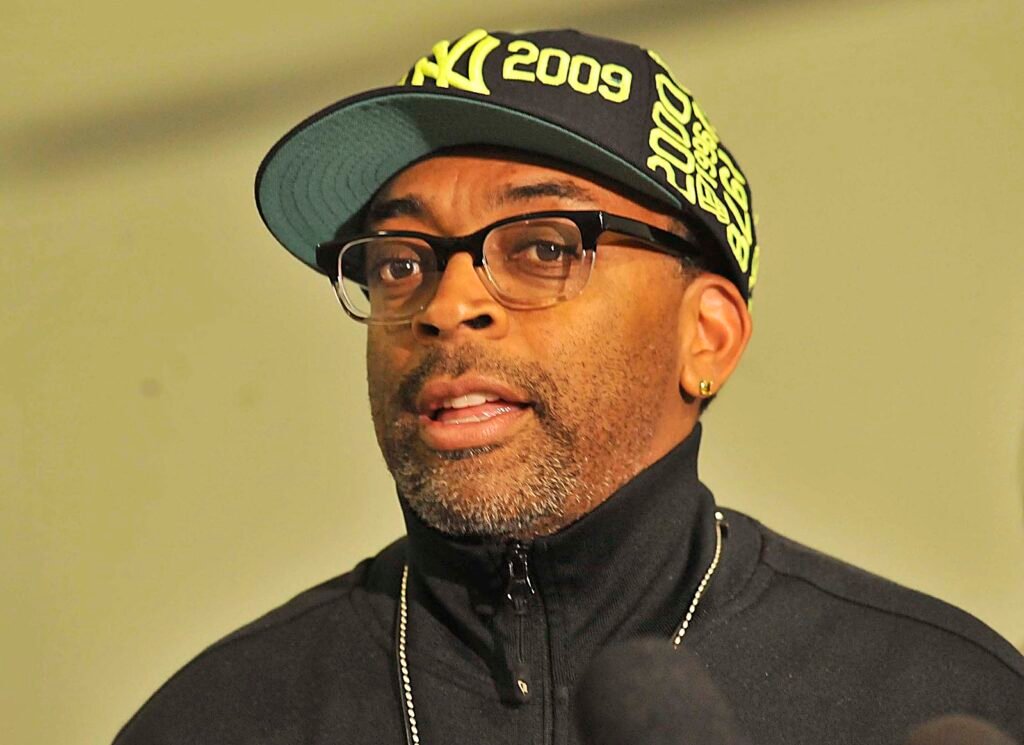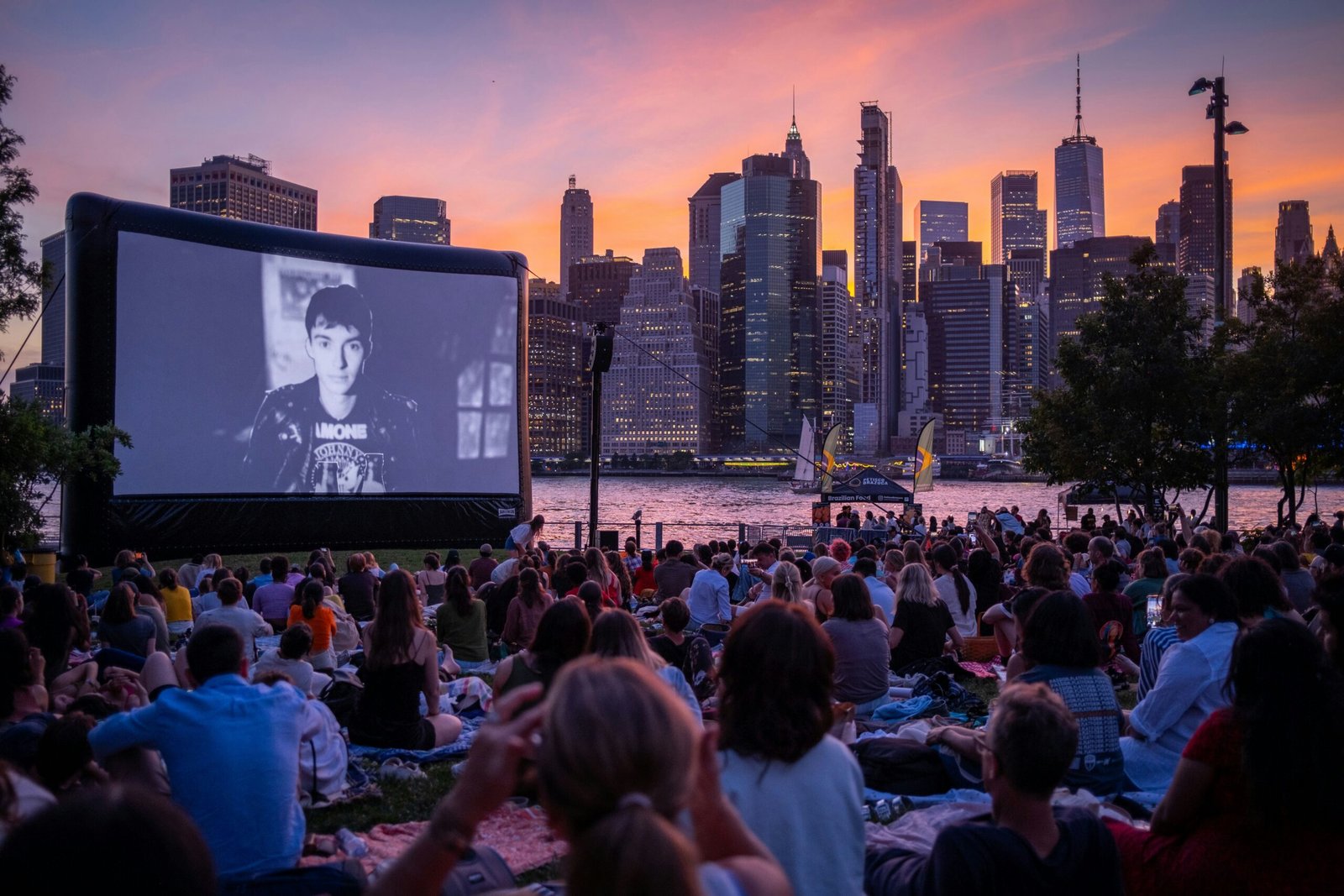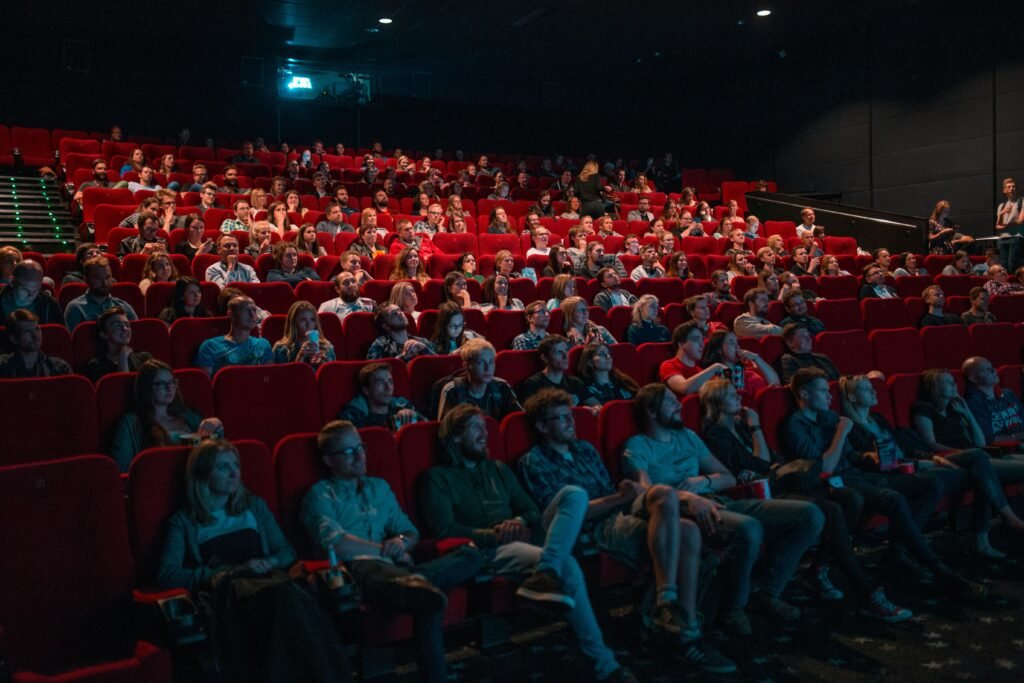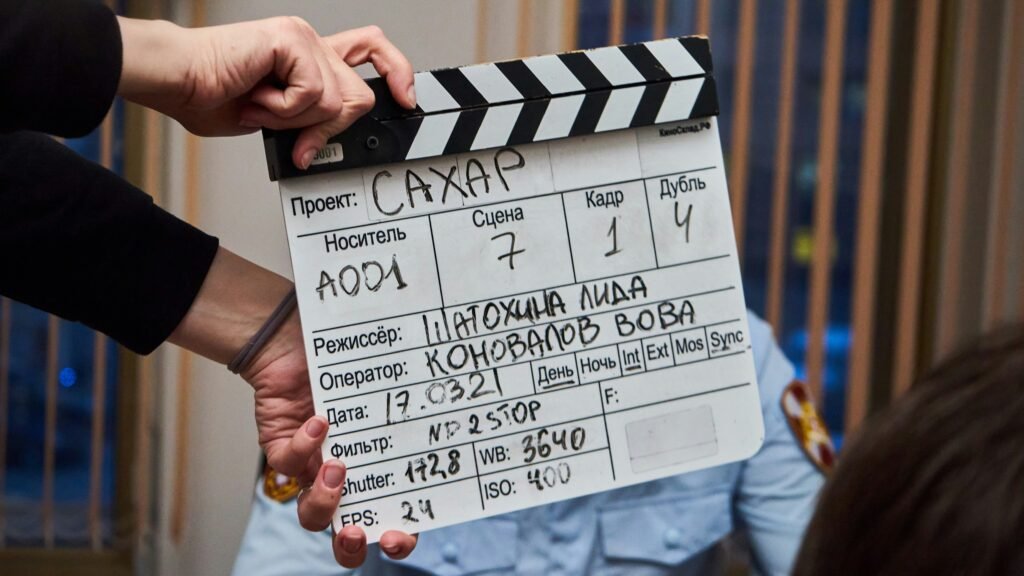Filmmaking
10 Tips from Spike Lee for Screenwriters and Filmmakers
Certainly. Here’s an elaboration on each of Spike Lee’s 10 tips for screenwriters and filmmakers:

- 1. Write about what you know: Lee emphasizes drawing from personal experiences and knowledge. This authenticity helps create more genuine and relatable stories.
- 2. Find and develop your unique voice: Lee stresses the importance of originality. Filmmakers should work on discovering and refining their individual style and perspective.
- 3. Work hard on your craft: Success comes from relentless effort and perseverance. Lee insists that there’s no substitute for hard work in the film industry.
- 4. Embrace the challenges: Filmmaking is inherently difficult, but Lee sees this as part of the creative process. Overcoming obstacles can lead to growth and better results.
- 5. Consider writing and directing: Many successful directors wrote their first films. This approach increases the chances of getting a project made and maintaining creative control.
- 6. Create compelling drama: Focus on conflicts between characters with opposing yet equally valid viewpoints. This creates tension and engages the audience.
- 7. Never stop learning: Even after decades in the industry, Lee emphasizes continuous growth as a filmmaker. There’s always more to learn about cinema.
- 8. Avoid laziness and entitlement: Lee has little tolerance for those who expect success without putting in the work. He believes in earning opportunities through dedication.
- 9. Utilize available technology: Filmmakers can now create feature films even with smartphones. Lee encourages using accessible tools to tell stories.
- 10. Develop your skills, with or without film school: While film school can provide resources, Lee stresses that formal education isn’t necessary to become a filmmaker. The key is to practice and improve your craft, regardless of your educational background.

Bolanle Media covers a wide range of topics, including film, technology, and culture. Our team creates easy-to-understand articles and news pieces that keep readers informed about the latest trends and events. If you’re looking for press coverage or want to share your story with a wider audience, we’d love to hear from you! Contact us today to discuss how we can help bring your news to life
Filmmaking
Why Hollywood’s Biggest Blockbusters Keep Failing at the Box Office

In 2024, Hollywood saw something it never expected: six films with budgets north of $200 million each, yet only half managed to break even—let alone turn a real profit. For studios betting on massive tentpoles, this isn’t just unlucky—it’s part of a growing pattern that’s reshaping the movie business.

So why are so many so-called “can’t-miss” blockbusters losing money? The answer lies in how the industry has changed—and how audiences have changed with it.
The Old Hollywood Playbook
Back in the mid-90s, movies had a clear financial path:
- Theatrical run: Films owned the box office exclusively for three months.
- Home video sales: VHS (and later DVD) acted like a second theatrical release, often doubling profits.
- Merchandising: Toys, soundtracks, and collectibles turned popular films into billion-dollar franchises.
In 1995, only three of the year’s top 25 films failed to triple their budgets, which meant most of Hollywood’s bets paid off. Compare that to today — where breaking even is celebrated as an accomplishment — and you see how much has shifted.
The Streaming Disruption
The biggest blow to the blockbuster model came not from competition between studios, but from streaming. With most movies hitting platforms within 30–45 days of release (or debuting there directly), audiences suddenly had little incentive to rush to theaters. Why spend $60-plus for tickets and snacks when, within weeks, you can watch at home for the cost of a monthly subscription?
And here’s the kicker—streaming revenues don’t come close to replacing the money Hollywood once made from DVD sales. As actor Matt Damon once explained, DVDs were a safety net: if a film underperformed theatrically, physical sales often bailed it out. That revenue stream is gone—and studios are still scrambling to replace it.

Why Sequels Dominate (and Originals Struggle)
Looking at the spreadsheets from 2023 and 2024, one thing is clear: the safest bets are sequels, remakes, and franchise films. Built-in fan bases, nostalgia, and existing marketing machinery give them a cushion that original stories just don’t have.
In fact, high-budget original movies fail roughly 9 out of 10 times. It’s no wonder studios lean heavily into superhero universes, live-action Disney remakes, or multi-part adaptations like Wicked. These aren’t just creative choices—they’re financial insurance policies.
Meanwhile, smaller independent studios like A24 or Neon are thriving. Their secret? Lower budgets, creative risks, and niche audiences. These “smaller” movies often make back 10x their cost, while blockbusters struggle to break even.

The Event Movie Still Works
But not all hope is lost for the blockbuster. When a film becomes more than just a movie—when it becomes a moment—audiences still show up in droves.
Barbie and Oppenheimer (a.k.a. “Barbenheimer”) proved this in 2023. Different as they were, both benefitted from a cultural wave: fans dressing up, meme-sharing, and making double-feature plans. The result? Two record-breaking successes released on the very same day.
The lesson: for theaters, the movie itself isn’t enough. It has to feel like an event.
The Three Paths Forward
Hollywood is at a turning point, and future success seems to hinge on three strategies:
- Franchise giants – Remakes, sequels, and superhero sagas that provide financial reliability.
- Event-driven films – Culturally viral movies that become must-watch theater experiences.
- Indie innovation – Lower-budget productions that can experiment, surprise audiences, and deliver massive returns on modest investment.

What This Means for Moviegoers
Ultimately, your movie ticket is your vote. If audiences want more risks, more originality, and more variety, theaters are the place to show it—not just streaming.
Yes, home viewing is cheaper, cozier, and more convenient. But theaters still offer something you can’t entirely replicate: a distraction-free, immersive, collective experience. And when a film earns that buzz, it still has the power to fill auditoriums and create lasting cultural moments.
For Hollywood, the message is clear: bigger budgets don’t guarantee success anymore. Creativity, strategy, and timing do.
Filmmaking
The Real Reasons Film Jobs Are Disappearing

The film industry—where dreams are made and legends are built—faces a reckoning. The unraveling isn’t loud or dramatic. Instead, it’s a slow, silent quake shaking the careers and creative ambitions of thousands working behind the scenes. Despite headlines pointing to record productions and billions spent on content, the reality for working professionals is anything but glamorous.

Hollywood’s Shaky Foundation
On the surface, production numbers look robust. Studios worldwide are churning out more films than ever, with regions like India hitting record outputs and the U.S. leading quarterly production surges. But quantity hides a painful truth: the kinds of movies and shows getting funded, where they’re made, and who profits have shifted dramatically. Los Angeles, once the heart of American filmmaking, is losing projects and gigs to states and countries rolling out irresistible tax incentives. Entire ecosystems, from seasoned propmasters to grips and cinematographers, are seeing a sharp drop in opportunities.
The Freelance Crisis
The freelance workforce—the true lifeblood of the industry—is in survival mode. Gig work, once a source of flexibility, now represents unpredictable gaps and vanished safety nets. Freelancers face more competition for fewer jobs, shorter project cycles, and pay that fails to keep pace with rising costs of living. As one veteran puts it: the last 18 months have been the bleakest of his career, echoing a reality felt from the UK to Hollywood.
The Death of Theaters and the Streaming Surge
Movie theaters, once the undisputed kings of cinema, are locked in a fight for survival. With screens disappearing and box office revenue stubbornly below pre-pandemic levels, the path to wide theatrical release has become narrower than ever. Streaming platforms have exploded, but the boom years of endless spending on original content are over. Now, it’s all about profit—fewer new shows, tighter budgets, and a focus on existing subscribers. The era of “growth at any cost” has faded, leaving freelancers and creators scrambling as streaming gigs dry up.

AI: The Double-Edged Sword
Artificial intelligence, previously a futuristic fantasy, has arrived at breakneck speed. Tools for scriptwriting, visual effects, editing, and even digital actors are transforming how films are made. AI-native studios, often operating with skeleton crews, can now accomplish what used to require full teams. While some hail these advancements as democratizing the creative process, the result for many is lost work, vanished roles, and the gnawing anxiety that machines may soon be competitors rather than collaborators.
The Globalization Effect
It isn’t just technology or economics redrawing the map; it’s globalization itself. New graveyards and new boom towns are being built as productions migrate to more favorable climates. Hollywood’s monopoly is over. Countries from Canada to the UK and India are booming, bringing in jobs—but at the cost of local freelancers in legacy hubs. Content is created everywhere, for audiences everywhere, dispersing both jobs and negotiating power.

The New Reality: Adapt or Exit
Put these pieces together and the truth is clear: there is no evil conspiracy, just a widespread reluctance to confront uncomfortable realities. The classic dream of a stable, long-term film career has become unpredictable and fragmented. For those who want to survive, adaptation is the only way forward—whether by embracing new skills, chasing work across borders, or reinventing roles in partnership with technology.
The industry’s old promise of constant growth and assured glamour is gone, replaced by a hard-nosed scramble for stability. The world won’t stop telling stories, but the way those stories are told—and who gets paid to tell them—has changed for good. For anyone entering the business, a new map is required: one that navigates uncertainty, competition, and the ever-blurring line between human and machine creativity.
Film Industry
Director Mike Talplacido Brings Filipino American Stories Center Stage with ‘The Manalos’

Mike Talplacido, creative director and filmmaker, sat down for an in-depth conversation with Houston Comedy Film Festival director Roselyn Omaka to discuss his celebrated short film, “The Manalos (New Beginnings).” The film, a comedic look at a Filipino American family’s move from the Midwest to California, shines as a finalist at the Houston Comedy Film Festival and offers a heartfelt take on identity, assimilation, and cultural connection.

Uplifting Filipino American Voices Through Comedy
Early in the interview, Mike shared his core motivation—uplifting Filipino Americans by telling stories that reflect their real lives and experiences. He spoke candidly about the importance of representation and the need for Filipino voices to take center stage in U.S. media, highlighting, “that’s really the foundation of why I do things: to help share more stories about us, about our culture, about our characters”. Roselyn applauded the relatability and cultural authenticity of “The Manalos,” noting how seamlessly Mike blended universal themes with specific Filipino American nuances, making the story “relatable” even to those outside the community.
Crafting the Sitcom-Style Family Story
Mike emphasized his vision for a comedic, sitcom-influenced style that centers Filipino American experiences. Unlike his previous work in drama, he wanted to venture into comedy, resulting in a film that balances humor with the realities of adaptation and family dynamics. Roselyn was especially impressed by the film’s comedic timing and the warmth that radiated from the ensemble cast.
Casting, Collaboration, and On-Set Memories
Casting was a community-driven process relying on word-of-mouth and social media outreach within the Filipino American community. Lead actor James Luntayahu’s performance stood out, earning praise for both his commitment and his comedic presence. Mike recounted a memorable scene involving James consuming Tic-Tacs as props— a testament to the actor’s dedication. The director called working with the cast, especially the children and first-time actors, one of his favorite aspects of the shoot, noting, “for me as a director, the best part is being able to work with actors… that’s what makes it fun.”

Overcoming Challenges: Locations and Continuity
Mike detailed production challenges, such as last-minute location changes. Securing the crucial grocery store scene required a scramble that was only resolved days before filming, demonstrating the resilience and adaptability of his team. Since the store remained open during filming, continuity and background changes were constant hurdles—but these were managed so skillfully that audiences would “never think twice” about them.

Advice for Filmmakers: Positivity Pays Off
In discussing set culture, Mike underscored the importance of a positive, upbeat environment, both for cast chemistry and for audience enjoyment. “As the director, you have the responsibility to set the tone for the whole shoot,” he told Roselyn, stressing that genuine behind-the-scenes fun translates to an authentic and enjoyable final product.
Favorite Moments: Creating Family On Screen
When asked about his personal highlights, Mike pointed to the family interactions and the challenge of orchestrating natural, dynamic scenes with several actors, especially children. His experience as an uncle informed his directing style, helping create playful, lively energy among first-time and veteran performers alike.
The Future: Features, Series, and Character Arcs
Mike revealed he’s open to expanding “The Manalos” into a feature film or web series. He’s especially interested in developing supporting characters further, such as the real estate agent portrayed as the “Filipino version of a Karen,” hinting at plenty of comedic possibilities ahead.
Mike’s Legacy: Continual Learning and Cultural Impact
In a thoughtful conclusion, Mike expressed his hope that each project will serve as both a learning experience and a platform for new voices: “Each project, I take as an opportunity to learn something new… always thinking, how can you get new experiences, skills, people, or friendships?” Above all, he aims to build a legacy anchored in sharing Filipino American stories honestly and joyfully.
Mike’s nuanced, lively conversation with Roselyn Omaka reaffirmed the power of comedy and representation in film—inviting theater audiences to laugh, reflect, and see themselves on screen in new ways.

 News4 weeks ago
News4 weeks agoDiddy Wakes Up to Knife in Prison Attack

 Business4 weeks ago
Business4 weeks agoHarvard Grads Jobless? How AI & Ghost Jobs Broke Hiring

 Entertainment2 weeks ago
Entertainment2 weeks agoAfter Party: Festival Winner for Best Romantic Short

 News1 week ago
News1 week agoCamp Wackapoo – Rise of Glog Takes Center Stage

 Entertainment1 week ago
Entertainment1 week agoFrancisco Ramos Takes Top Mockumentary Award at Houston Comedy Film Festival

 Politics2 weeks ago
Politics2 weeks agoMamdani’s Victory Triggers Nationwide Concern Over New York’s Future

 Politics2 weeks ago
Politics2 weeks agoTrump’s $2,000 Tariff Dividend Plan: Who Gets Paid?

 News1 week ago
News1 week ago50-Year Mortgages: A Game Changer or a Debt Trap?






































